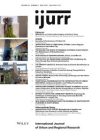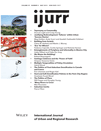During the years following the second world war, an urban development model—dispersed suburbanism (DS)—came to predominate in North America. The low-density functional specialization and all-out automobile orientation of this new urban form were ideally suited to the circumstances of the time, thus accounting for its rapid adoption. DS also proved to be adaptable to changing societal circumstances, which explains its predominance as an urban development model under both Fordism and neoliberalism. The adaptability of this urban form also contributed to its spread across much of the world, including Europe. This essay contends that powerful path dependencies maintain DS in place, despite planning efforts to achieve more compact, public-transit oriented urban development. It also argues that the persistence of DS is a source of hardship for low-income households forced to live in suburban environments, and entrenches conservative political values.

